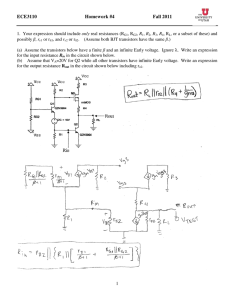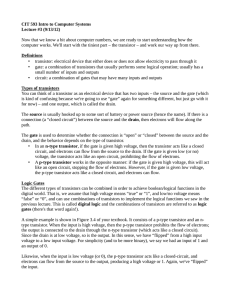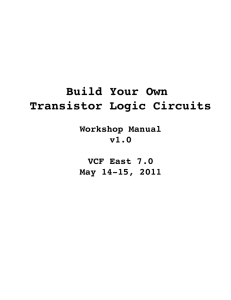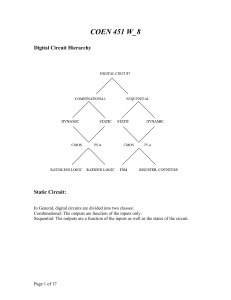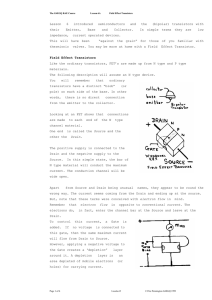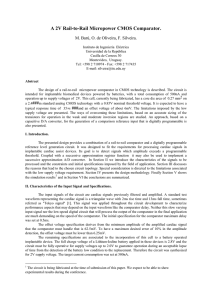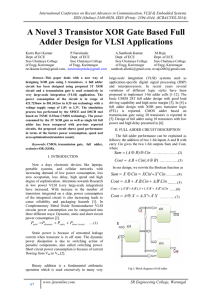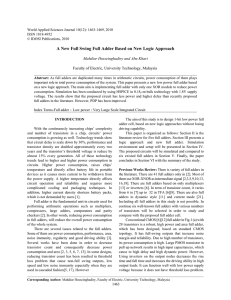Final Exam ENEE 408D Part I (55pts.)
advertisement
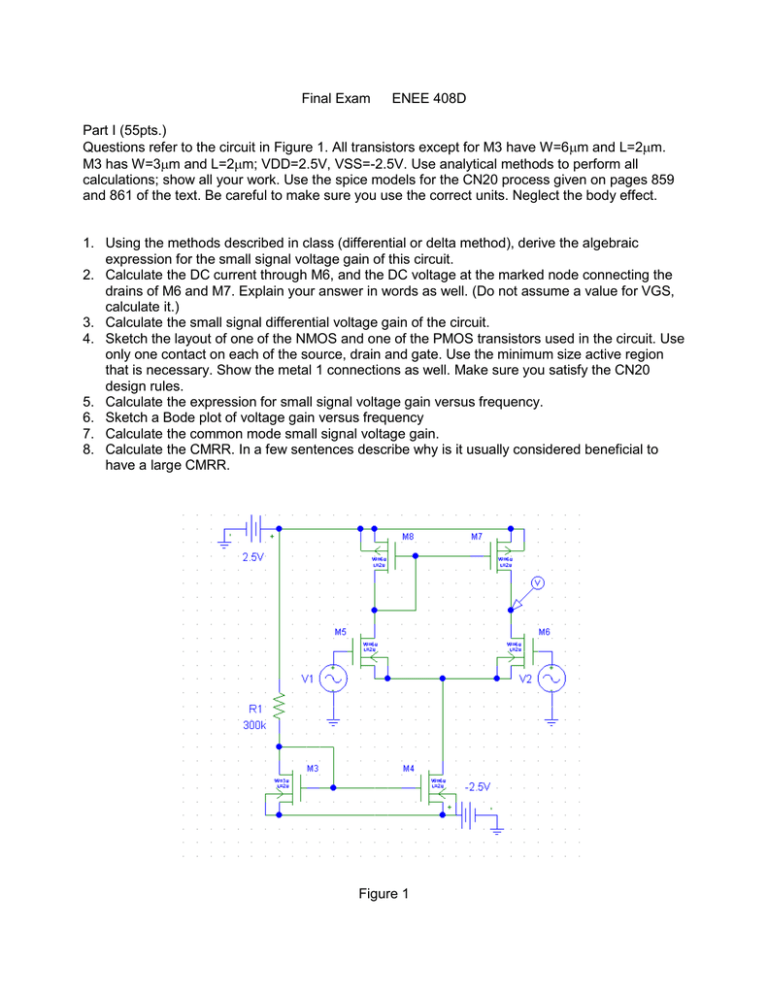
Final Exam ENEE 408D Part I (55pts.) Questions refer to the circuit in Figure 1. All transistors except for M3 have W=6m and L=2m. M3 has W=3m and L=2m; VDD=2.5V, VSS=-2.5V. Use analytical methods to perform all calculations; show all your work. Use the spice models for the CN20 process given on pages 859 and 861 of the text. Be careful to make sure you use the correct units. Neglect the body effect. 1. Using the methods described in class (differential or delta method), derive the algebraic expression for the small signal voltage gain of this circuit. 2. Calculate the DC current through M6, and the DC voltage at the marked node connecting the drains of M6 and M7. Explain your answer in words as well. (Do not assume a value for VGS, calculate it.) 3. Calculate the small signal differential voltage gain of the circuit. 4. Sketch the layout of one of the NMOS and one of the PMOS transistors used in the circuit. Use only one contact on each of the source, drain and gate. Use the minimum size active region that is necessary. Show the metal 1 connections as well. Make sure you satisfy the CN20 design rules. 5. Calculate the expression for small signal voltage gain versus frequency. 6. Sketch a Bode plot of voltage gain versus frequency 7. Calculate the common mode small signal voltage gain. 8. Calculate the CMRR. In a few sentences describe why is it usually considered beneficial to have a large CMRR. Figure 1 Part II (45pts) Use analytical methods to perform all calculations. Use the spice models for the CN20 process given on pages 859 and 861 of the text. Be careful make sure you use the correct units. Neglect the body effect. 1. Using 2-input NAND, 2-input NOR and INVERTER gates design a two bit full adder by using two single bit full adders. The adder should add two 2-bit words at the input, and have a 2-bit sum and a carry at the output. Make sure your Boolean expression is minimized like in the homework. 2. Show how you would design each of the gates using transistors. All transistors should have minimum gate length. 3. Calculate the appropriate gate widths to have switching points close to 2.5V. Only use integer values for gate widths. 4. How fast will your adder operate? 5. Now, suppose your adder is connected to a data bus at the output that is connected to the pads. The data bus consists of a 3m wide and 50m long interconnect composed of metal 1. The interconnect is then connected to the output using a pad that is 80m X 80m which is also composed of metal 1. Now how fast will your circuit operate? 6. Show how you would add ESD protection to the pads of this circuit. Why do we have to add ESD protection, and for what values of pad voltages will it turn on?




